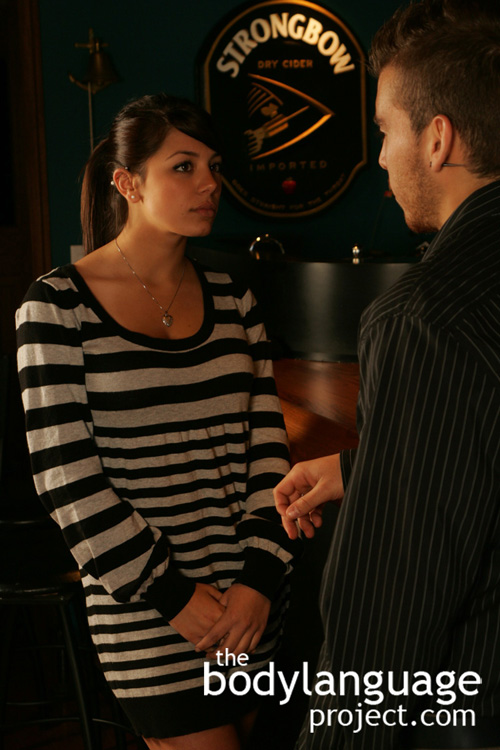This chapter was focused on dominant and submissive gestures and how they can be used to reach specific goals depending on the situation. One of those goals was conflict avoidance by reducing body size. We found that melting into the background by “sinking in the chair” or pulling the arms inward, pulling the shoulders down and rounding them, hunching in, pulling the chin in and pulling the legs or knees closer together can help to send a non-threatening signal and calm an attacker. Next we looked at how height relates to dominance and spelled out tactics to put ourselves at an advantage be it by taking up a seated position (to level ourselves) or taking to an elevated stage or position. We saw in this chapter that relaxed body language signals ownership and confidence so we should look for a lack of muscle tension, freely moving hands, feet and torso, along with open body postures, to read which people are most confident.
We also found that the head signals nonverbally, for example, the headshake signals a negative thought, whereas the head nod can mean agreement such as in the west or can mean submission or even that a speaker is being heard in Japan, head down represents judgment or a negative thought when accompanied by similar cues in cluster, head tilted shows interest and head back means disapproval.
We discovered that dominant positions are generally also considered open postures and submissive postures are also usually considered closed postures. This theory allowed us to conclude that the chair straddler was both opened and therefore dominant, but also cowardly because the back of the chair formed a barrier from where he or she might throw figurative arrows or spears. We found that legs spread is a dominant gesture and of degree; the greater the spread the more dominant and at some point outright offensive, as in the case of having the leg over the arm of a chair. The full body steeple where both hands are up and behind the head while seated with or without the figure-four leg cross is both confident and dominant, but also depicts a relaxed disposition. We covered that titling backwards in the chair is dominant and casual, having the hands on hips is to imitate a peacock and appear larger and more attractive dominant or in charge, and that the cowboy pose with thumbs in belt loops popularized by old western’s is macho. We learned that the military man who exposes his torso with his hands, palm in palm to his back delineates power.
We then covered the importance of thumbs and how they show importance and superiority, how fences make great neighbours, and methods we display ownership one of which is by breaking social rules or via body language through control of facial expressions. We found that touching between men symbolizes power plays and social jostling, but between men and women, usually signifies sexual interest and that light touching helps gain compliance even from strangers. We also outlined why we should avoid filling our language with junk instead of simply punctuating a point, how talking fast makes us appear insecure or nervous unlike Barack Obama and how low-pitched masculine voices increased ratings of men’s physical and social dominance.

